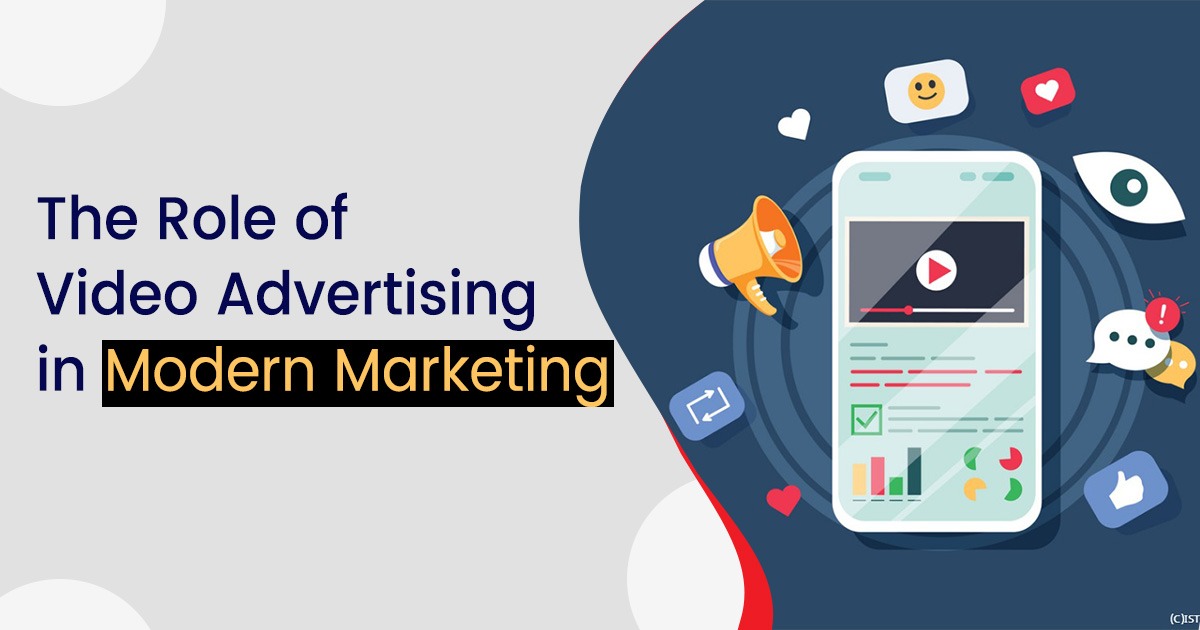The Role of Video Advertising in Modern Marketing
|
Getting your Trinity Audio player ready...
|
The Role of Video Advertising in Modern Marketing
In today’s fast-paced digital landscape, video advertising has emerged as a cornerstone of modern marketing strategies. The power of video to capture attention, convey complex messages, and engage audiences in a way that text and images alone cannot has made it an indispensable tool for businesses looking to connect with consumers. This blog post will explore the role of video advertising in modern marketing, examining its benefits, best practices, and future trends.
The Rise of Video Advertising
The rise of video advertising is closely linked to the proliferation of high-speed internet and the increasing availability of video-capable devices. As smartphones, tablets, and high-definition screens became ubiquitous, so too did the demand for video content. Platforms like YouTube, Instagram, Facebook, and TikTok have capitalized on this trend, becoming major hubs for video consumption.
According to a study by Cisco, video content will account for 82% of all internet traffic by 2025. This staggering figure underscores the growing importance of video in the digital marketing ecosystem. Consumers are not just watching videos; they are actively seeking them out, with 54% of consumers wanting to see more video content from brands they support. This shift in consumer behavior has forced marketers to rethink their strategies, placing video at the forefront of their campaigns.
Benefits of Video Advertising
- Enhanced Engagement: Video content is inherently more engaging than text or static images. It combines visuals, sound, and motion to create a multisensory experience that can capture and retain attention better than other forms of media. Videos are more likely to be shared on social media, which can amplify a brand’s message and increase its reach.
- Improved Conversion Rates: Video advertising has been shown to have a direct impact on conversion rates. A study by Wyzowl found that 84% of people who watched a brand’s video were convinced to make a purchase. Videos can effectively communicate product benefits, showcase features, and demonstrate value, making them a powerful tool for driving sales.
- Better SEO Performance: Search engines favor video content, with Google often prioritizing video results on its search engine results pages (SERPs). By incorporating video into your website and marketing strategy, you can improve your site’s SEO performance, driving more organic traffic. Additionally, video content can increase the time users spend on your site, which is another factor that can boost your search rankings.
- Increased Brand Awareness and Recall: Videos are highly memorable. According to HubSpot, 80% of customers remember a video they watched in the past month. This increased recall can lead to better brand awareness and can make a brand more top-of-mind when consumers are ready to make a purchase.
- Versatility Across Platforms: One of the major advantages of video content is its versatility. Videos can be adapted and repurposed across multiple platforms, from YouTube and social media to email campaigns and landing pages. This cross-platform adaptability makes video a cost-effective and efficient marketing tool.

Best Practices for Video Advertising
To maximize the impact of video advertising, it is essential to follow best practices that align with both your brand and audience. Here are some key strategies:
- Know Your Audience: Understanding your target audience is critical to creating video content that resonates. Conducting market research and analyzing customer data can provide insights into what type of video content will be most effective.
- Keep It Short and Sweet: Attention spans are shorter than ever, and viewers are more likely to engage with content that is concise and to the point. Aim for videos that are under two minutes long, especially for platforms like Instagram and Twitter where shorter formats perform better.
- Focus on Storytelling: Good storytelling is at the heart of effective video advertising. Rather than just promoting a product, tell a story that evokes emotion, solves a problem, or delivers value to your audience. This approach can create a deeper connection with viewers and make your brand more relatable.
- Optimize for Mobile: With more than half of all video content being viewed on mobile devices, it’s crucial to optimize your videos for mobile viewing. This includes using vertical or square video formats and ensuring that your content is easily viewable on smaller screens.
- Include a Call to Action (CTA): Every video should have a clear call to action that guides viewers on what to do next, whether it’s visiting a website, signing up for a newsletter, or making a purchase. The CTA should be direct, easy to follow, and aligned with the video’s content.
- Leverage Analytics: Use video analytics to track performance and understand how your audience is interacting with your content. Metrics like view count, watch time, and engagement rates can provide valuable insights into what’s working and what needs improvement.
Future Trends in Video Advertising
As technology continues to evolve, so too will the landscape of video advertising. Here are some emerging trends to watch:
- Interactive Video: Interactive videos, which allow viewers to engage directly with the content by making choices or clicking on elements within the video, are becoming increasingly popular. This format offers a more immersive experience and can lead to higher engagement rates.
- Personalization: Personalization is set to play a major role in the future of video advertising. By leveraging data, brands can create personalized video content that speaks directly to individual consumers, enhancing relevance and boosting engagement.
- Shoppable Videos: Shoppable videos, which enable viewers to purchase products directly from the video, are on the rise. This trend combines entertainment with e-commerce, making it easier for consumers to buy products while watching a video.
- Augmented Reality (AR) and Virtual Reality (VR): AR and VR technologies are poised to revolutionize video advertising by offering immersive, interactive experiences that go beyond traditional video formats. Brands can use these technologies to create virtual showrooms, product demonstrations, and more.
Video advertising has solidified its place as a key component of modern marketing strategies. Its ability to engage audiences, improve conversion rates, and enhance brand awareness makes it an invaluable tool for businesses. As technology continues to evolve, the role of video in marketing will only become more prominent, offering new opportunities for brands to connect with consumers in innovative and impactful ways.
For more insights on digital marketing and SEO strategies, visit SEOTips4U.

 Previous Post
Previous Post Next Post
Next Post